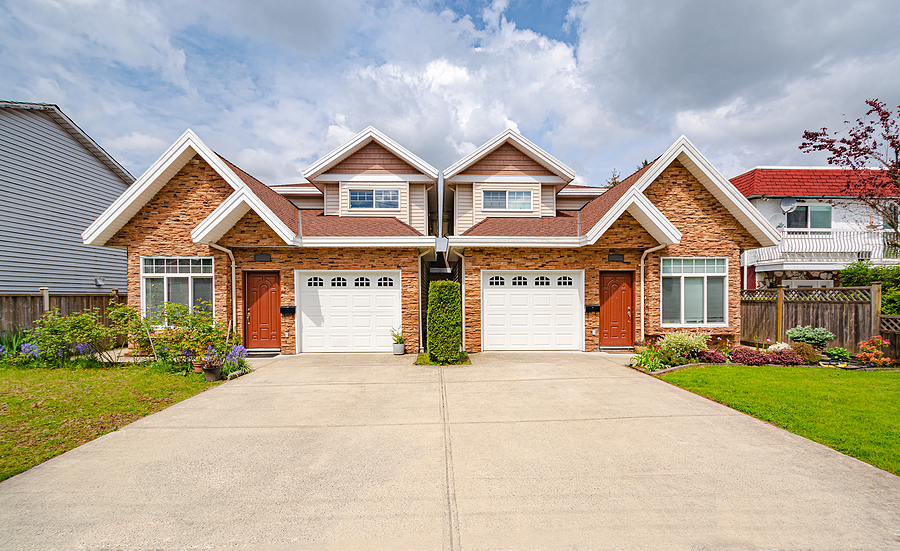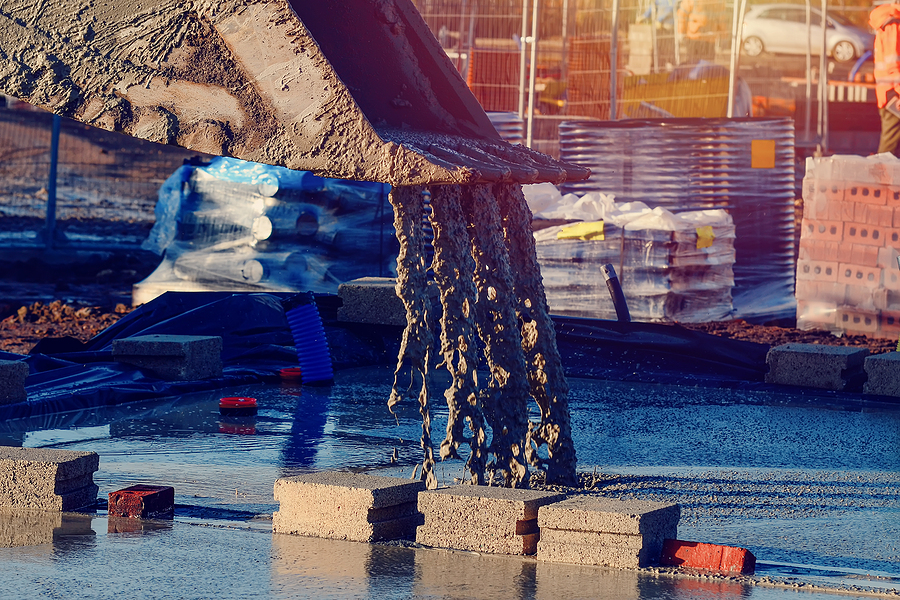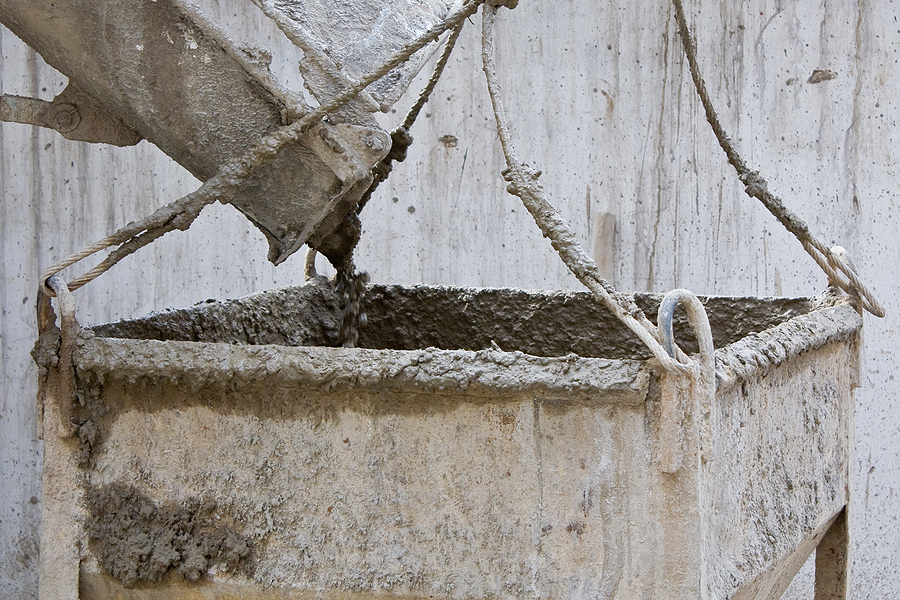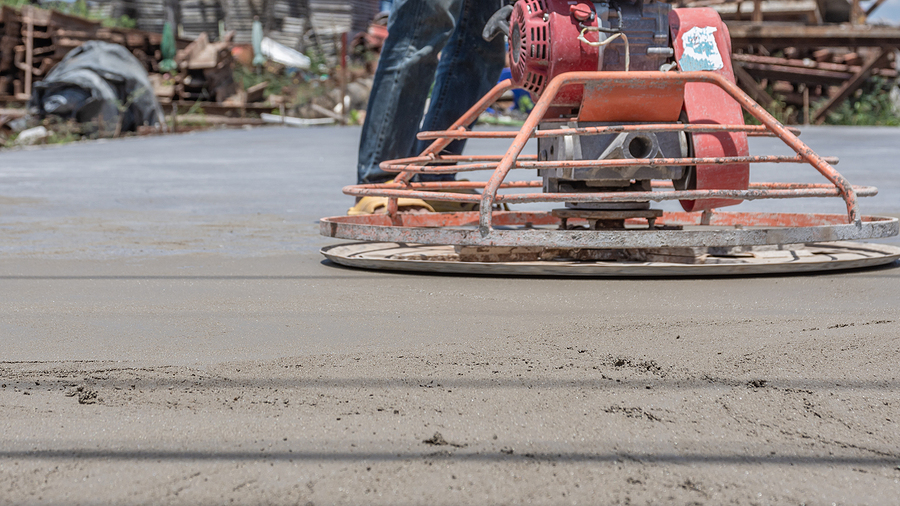A driveway is often one of the first things people notice about a home. It’s more than just a place to park your car; it’s a functional part of your property that contributes to its overall curb appeal. Homeowners are increasingly turning to concrete for their driveways, and for good reason. A well-installed concrete driveway offers a clean, durable, and attractive entrance to your home.
This guide will explore the benefits of choosing a concrete driveway, particularly for those living in the challenging Midwest climate. We’ll also provide practical advice on how to prepare for installation and maintain your driveway to ensure it lasts for decades.

Why Choose a Concrete Driveway?
Concrete offers a unique combination of strength, beauty, and value that makes it an excellent choice for any home. Let’s look at the specific advantages that make it a superior option.
Durability and Longevity
One of the most significant advantages of a concrete driveway is its incredible durability. Concrete is a rigid, strong material that can easily withstand the weight of heavy vehicles without rutting or shifting. For homeowners in the Midwest, this strength is especially valuable.
Concrete holds up remarkably well against the region’s harsh weather, from scorching summer heat to the intense freeze-thaw cycles of winter. With proper installation and care, a concrete driveway can last 30 years or more, providing a reliable surface for generations.
Low Maintenance Requirements
Compared to materials like asphalt or gravel, concrete driveways require minimal upkeep. Asphalt needs regular sealing every few years to prevent cracking and deterioration, while gravel driveways demand constant raking and replenishment.
Concrete, on the other hand, needs very little attention. An occasional cleaning and resealing every few years is typically all that’s required to keep it in excellent condition. This low-maintenance nature saves homeowners both time and money over the lifespan of the driveway.
Aesthetic Appeal and Versatility
Gone are the days of plain, gray concrete slabs. Modern concrete driveways offer a wide range of decorative options to enhance your home’s curb appeal. You can choose from various colors, textures, and finishes to create a look that complements your home’s architectural style.
Stamped concrete can mimic the appearance of more expensive materials like brick, slate, or cobblestone, offering a high-end look at a fraction of the cost. The design possibilities are nearly endless, allowing you to create a truly custom and inviting entrance.
Long-Term Cost-Effectiveness
While the initial installation cost of a concrete driveway might be higher than asphalt, its long-term value is undeniable. Because it requires less maintenance and has a much longer lifespan, concrete often proves to be the more economical choice over time.
You won’t face the recurring costs of resealing, resurfacing, or completely replacing your driveway every decade or so. Investing in concrete is an investment in your property’s future.
Preparing for Your New Concrete Driveway
Proper preparation is the most critical factor in ensuring your concrete driveway’s longevity and performance. A rushed or poorly planned installation can lead to premature cracks and costly repairs.
Planning and Design
The first step is a thorough site evaluation. A professional contractor will assess the ground’s stability, slope, and soil composition. Proper drainage is essential to prevent water from pooling on or under the slab, which can cause significant damage, especially during freeze-thaw cycles. The contractor will also ensure the design complies with local building codes and regulations, including setback requirements and permit acquisitions.
Choosing the Right Concrete Mix
Not all concrete is created equal. The “mix design”—the specific recipe of cement, water, sand, and aggregates—is crucial for durability, especially in a climate like Indiana’s. A proper mix for the Midwest should have a specific strength rating (measured in PSI) and incorporate air-entrainment.
Air-entrained concrete contains microscopic air bubbles that give water a place to expand when it freezes, significantly reducing the risk of cracking and surface scaling from winter weather.
The Importance of a Professional Contractor
While a DIY approach might seem tempting, pouring a concrete driveway is a complex job that demands expertise. A professional concrete paving contractor has the knowledge, experience, and equipment to do the job right.
They will ensure the subgrade is properly prepared and compacted, the forms are set correctly, the right mix is used, and the concrete is finished and cured properly. Hiring a reputable professional is the single best way to guarantee a high-quality, long-lasting driveway.
Book a Concrete Driveway Paving Assessment Now ✅
How to Make Your Concrete Driveway Last
Once your driveway is installed, a little routine maintenance will go a long way in preserving its appearance and structural integrity for years to come.
Sealing Your Driveway
Applying a quality sealer is one of the most effective ways to protect your concrete. A sealer creates a protective barrier on the surface that repels water, oil, and other chemicals, preventing them from penetrating the concrete and causing stains or damage. For new concrete, it’s best to wait about 30 days before the initial sealcoating. Afterward, resealing every 2-3 years will keep your driveway looking its best and protect it from the elements.
Proper Cleaning and Stain Removal
Keeping your driveway clean prevents dirt and grime from settling into the pores of the concrete. Regular sweeping and rinsing with a garden hose are often sufficient. For tougher stains like oil or grease, act quickly.
Use an absorbent material like cat litter to soak up the spill, then scrub the area with a concrete cleaner or degreaser and a stiff brush. Avoid using harsh acids, as they can damage the concrete’s surface.
Repairing Minor Cracks
Small cracks can appear in concrete over time due to ground settlement or shrinkage. It’s important to address these cracks promptly to prevent water from seeping in and causing more significant problems, especially during winter.
You can fill small cracks with a flexible concrete caulk or crack filler available at most hardware stores. For larger or more extensive cracking, it’s best to consult a professional for concrete crack repair options.
Winter Care in the Midwest
Winter poses the biggest threat to concrete driveways in Central Indiana. The repeated freezing and thawing of water can cause significant stress. To protect your investment, avoid using de-icing salts containing ammonium nitrate or ammonium sulfate, as these chemicals can aggressively attack concrete.
Opt for sand or calcium chloride-based products for traction. Additionally, use a plastic shovel to clear snow, as metal shovels can scrape and damage the concrete surface.
In Summary
A concrete driveway is a durable, low-maintenance, and beautiful addition to any home. It offers unmatched longevity and value, especially in demanding climates like the Midwest. By ensuring proper professional installation and following a simple maintenance routine, you can enjoy a driveway that not only enhances your home’s curb appeal but also stands the test of time.
If you’re in Central Indiana and considering a new concrete driveway or need repairs on your existing one, our team of experienced professionals is here to help. Contact Us Today for a consultation and let us build a lasting foundation for your home.
Related Post: Paving the Way to Longevity: Mastering Asphalt Driveway Care









